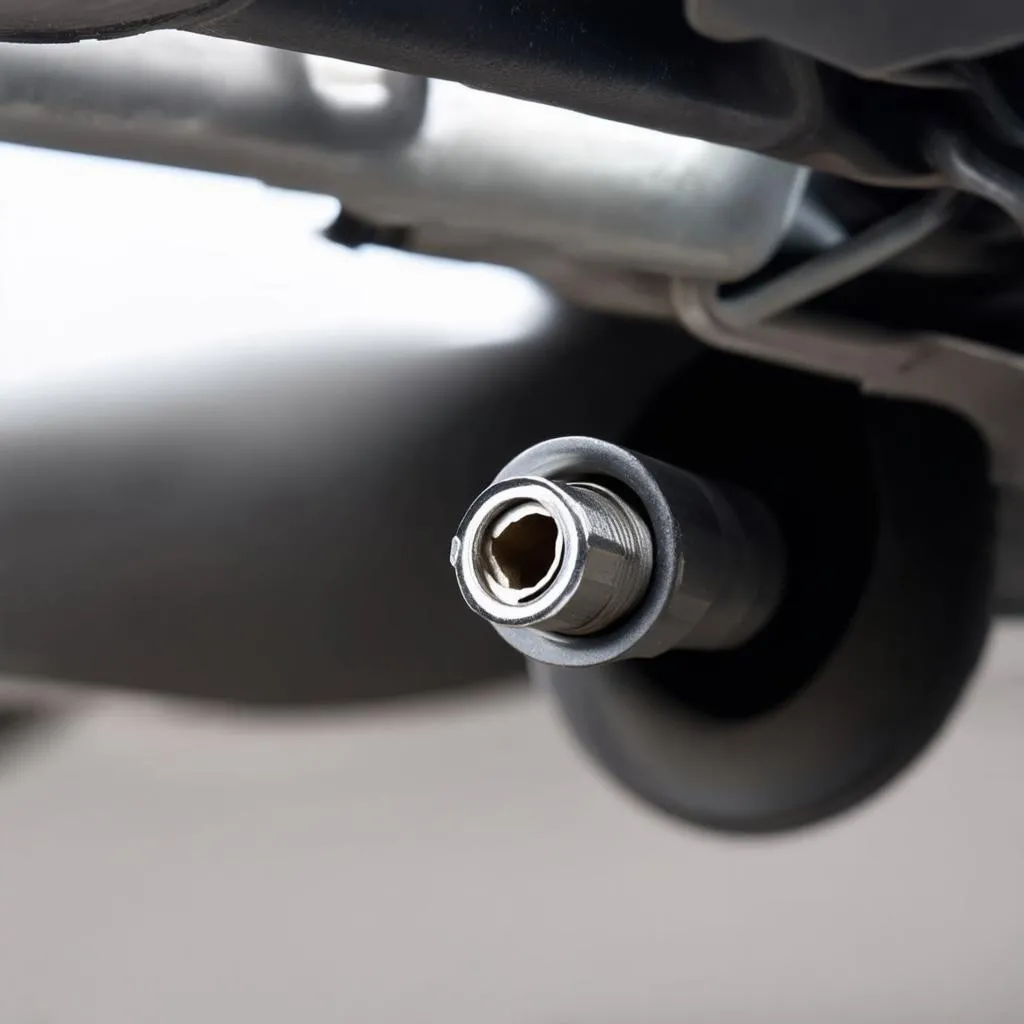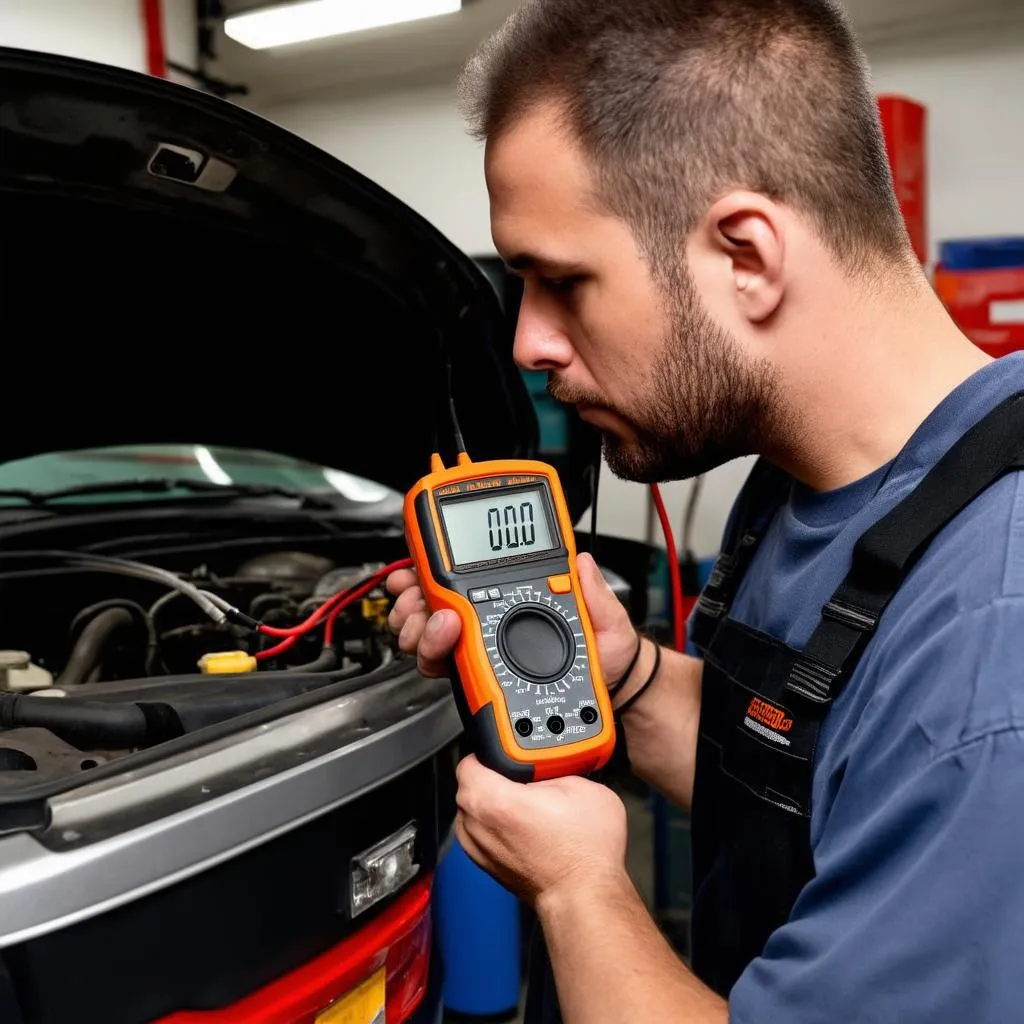Have you ever been cruising down the road in your trusty Dodge, only to be met with the dreaded check engine light? We’ve all been there. It can feel like your car is speaking a foreign language, and deciphering those cryptic OBD-II codes can be a real head-scratcher. One particularly common code that pops up for Dodge owners is the P0054. What does it mean? What should you do about it? Don’t worry; we’re here to shed some light on this common issue.
Unmasking the P0054 Code: What Does It Really Mean?
Simply put, the P0054 code signals a problem with the oxygen sensor heater circuit in Bank 1, Sensor 1. “Bank 1” refers to the side of the engine where cylinder number one resides, while “Sensor 1” indicates the upstream oxygen sensor, positioned before the catalytic converter. This sensor plays a crucial role in helping your engine achieve the perfect air-to-fuel ratio for optimal performance and fuel efficiency.
 Dodge Oxygen Sensor
Dodge Oxygen Sensor
But what does the “heater circuit” part have to do with it? Well, oxygen sensors need to be warmed up to function properly. This is where the heater circuit comes in – it brings the sensor up to operating temperature quickly, especially during cold starts. If the heater circuit malfunctions, the sensor can’t provide accurate readings, triggering the P0054 code and potentially impacting your engine’s performance.
Decoding the Symptoms: What Happens When P0054 Strikes?
Sometimes, the P0054 code might be subtle, lurking in the background without any noticeable symptoms. However, more often than not, it announces its presence with telltale signs, such as:
- Illuminated Check Engine Light: This is often the first and most obvious clue.
- Rough Idling: Your engine might sound a bit grumpy and uneven at idle.
- Reduced Fuel Economy: A malfunctioning oxygen sensor can throw off the air-fuel mixture, leading to decreased fuel efficiency.
- Failed Emissions Test: In some cases, the P0054 code can prevent your Dodge from passing emissions tests.
Navigating the Causes: Why Did I Get P0054?
Pinpointing the exact culprit behind the P0054 code requires a bit of detective work. Several potential causes might be at play, including:
- Faulty Oxygen Sensor (Bank 1, Sensor 1): Over time, oxygen sensors can wear out or become contaminated, leading to inaccurate readings.
- Damaged Wiring or Connector: Frayed, corroded, or loose wiring within the oxygen sensor circuit can disrupt the flow of information.
- Blown Fuse: A blown fuse in the oxygen sensor heater circuit can interrupt power supply.
- Faulty Engine Control Module (ECM): In rare cases, a malfunctioning ECM might be misinterpreting signals or failing to provide power to the sensor heater circuit.
“A failing oxygen sensor can be like a whispering ghost in your car’s system,” explains renowned automotive expert Dr. Emily Carter in her book, “The Soul of the Machine.” “You might not see it, but its impact can be subtly felt throughout your vehicle’s performance.”
Confronting the P0054 Code: What Are Your Options?
If you’re facing the P0054 code, don’t panic! There are steps you can take to address the issue and restore your Dodge to its former glory. Here are a few potential solutions:
1. Verify the Code with a Reliable OBD-II Scanner
Before diving into repairs, it’s always wise to double-check the code using a trustworthy OBD-II scanner. This ensures you’re on the right track.
2. Inspect the Oxygen Sensor and Wiring
Carefully examine the oxygen sensor and its wiring harness for any visible signs of damage, such as burns, breaks, or loose connections. If you spot any issues, repair or replace the damaged components.
3. Test the Oxygen Sensor Heater Circuit
Using a multimeter, test the resistance of the oxygen sensor heater circuit. Compare your readings to the manufacturer’s specifications to determine if the heater circuit is functioning correctly.
 Mechanic Testing Oxygen Sensor
Mechanic Testing Oxygen Sensor
4. Replace the Oxygen Sensor
If the oxygen sensor itself is faulty, replacing it is usually the most effective solution. Ensure you use a high-quality replacement sensor that is compatible with your specific Dodge model.
5. Seek Professional Help
If you’re uncomfortable tackling repairs yourself or the issue persists despite your best efforts, don’t hesitate to consult a qualified mechanic specializing in Dodge vehicles. They have the expertise and tools to diagnose and resolve the P0054 code accurately.
Beyond P0054: Exploring Related Codes
The P0054 code has several close relatives that might also signal oxygen sensor issues in your Dodge. These include:
- P0051: HO2S11 Heater Control Circuit Low (Bank 1, Sensor 1)
- P0052: HO2S11 Heater Control Circuit High (Bank 1, Sensor 1)
- P0055: HO2S12 Heater Control Circuit (Bank 1, Sensor 2)
- P0056: HO2S12 Heater Control Circuit Low (Bank 1, Sensor 2)
- P0057: HO2S12 Heater Control Circuit High (Bank 1, Sensor 2)
Staying One Step Ahead: Preventing Future P0054 Codes
While you can’t completely eliminate the possibility of encountering the P0054 code again, some preventative measures can help keep it at bay:
- Regular Vehicle Maintenance: Following your Dodge’s recommended maintenance schedule, including regular oxygen sensor inspections, can prevent many issues.
- Quality Fuel and Oil: Using high-quality fuel and oil can help minimize sensor contamination and prolong their lifespan.
- Addressing Engine Issues Promptly: Ignoring other engine problems can put stress on the oxygen sensor and lead to premature failure.
Need a Hand? We’re Here to Help!
Dealing with OBD-II codes and car troubles can be frustrating, but remember, you don’t have to face them alone. If you need expert assistance with your Dodge’s diagnostic tool or require any car repair support, our team of specialists is just a message away. Feel free to reach out to us on WhatsApp at +84767531508. We’re available 24/7 to help you get back on the road with confidence!
Remember, a little knowledge and the right help can go a long way in keeping your Dodge running smoothly for years to come.